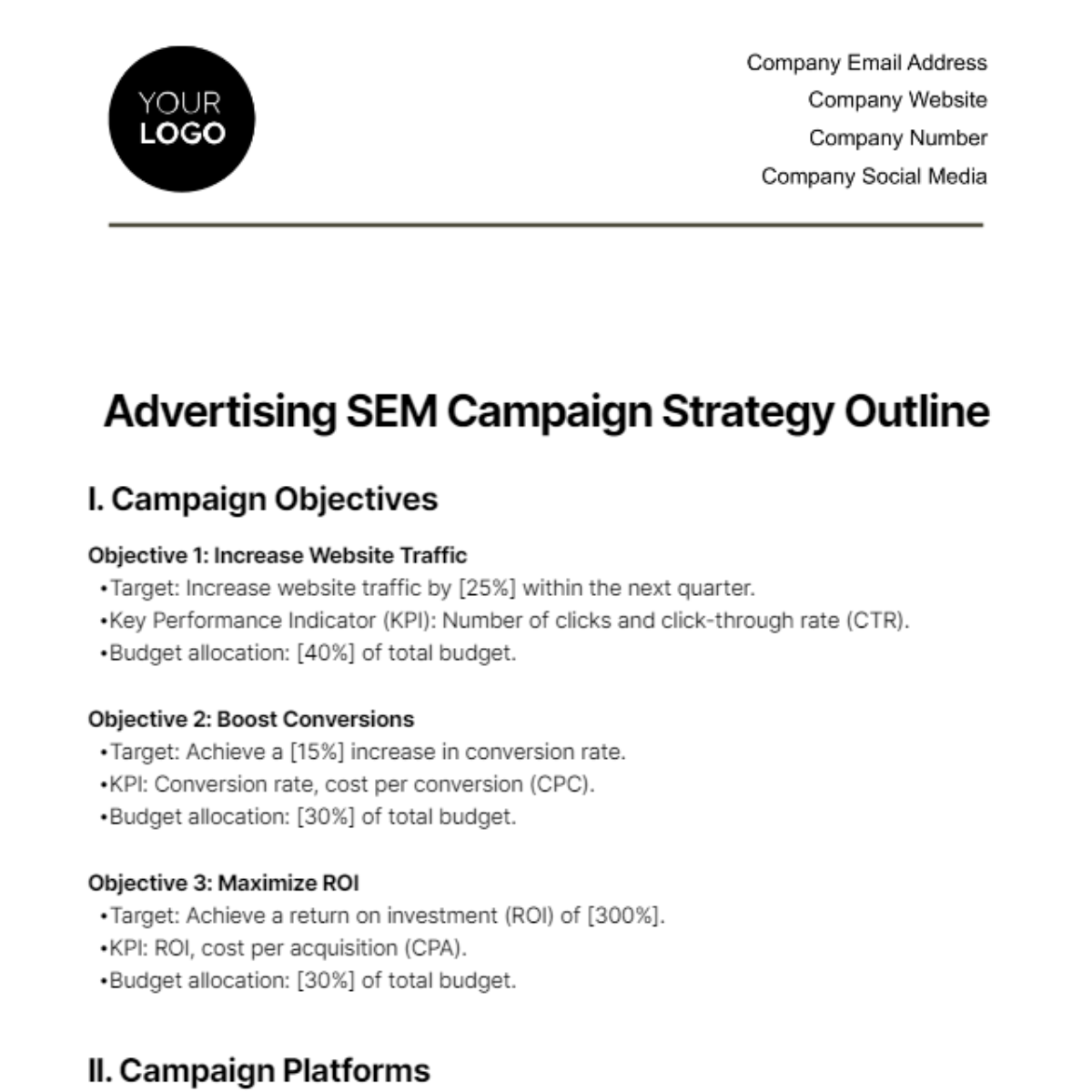Free Advertising SEM Campaign Strategy Outline
Unleash higher business growth with Template.net’s Advertising SEM Campaign Strategy Outline Template. This editable, customizable tool facilitates systematic planning for successful campaigns. Editable in our Ai Editor Tool, it empowers you to implement strategic initiatives with precision. Choose our template to streamline your marketing operations and witness your business soaring to new heights.
